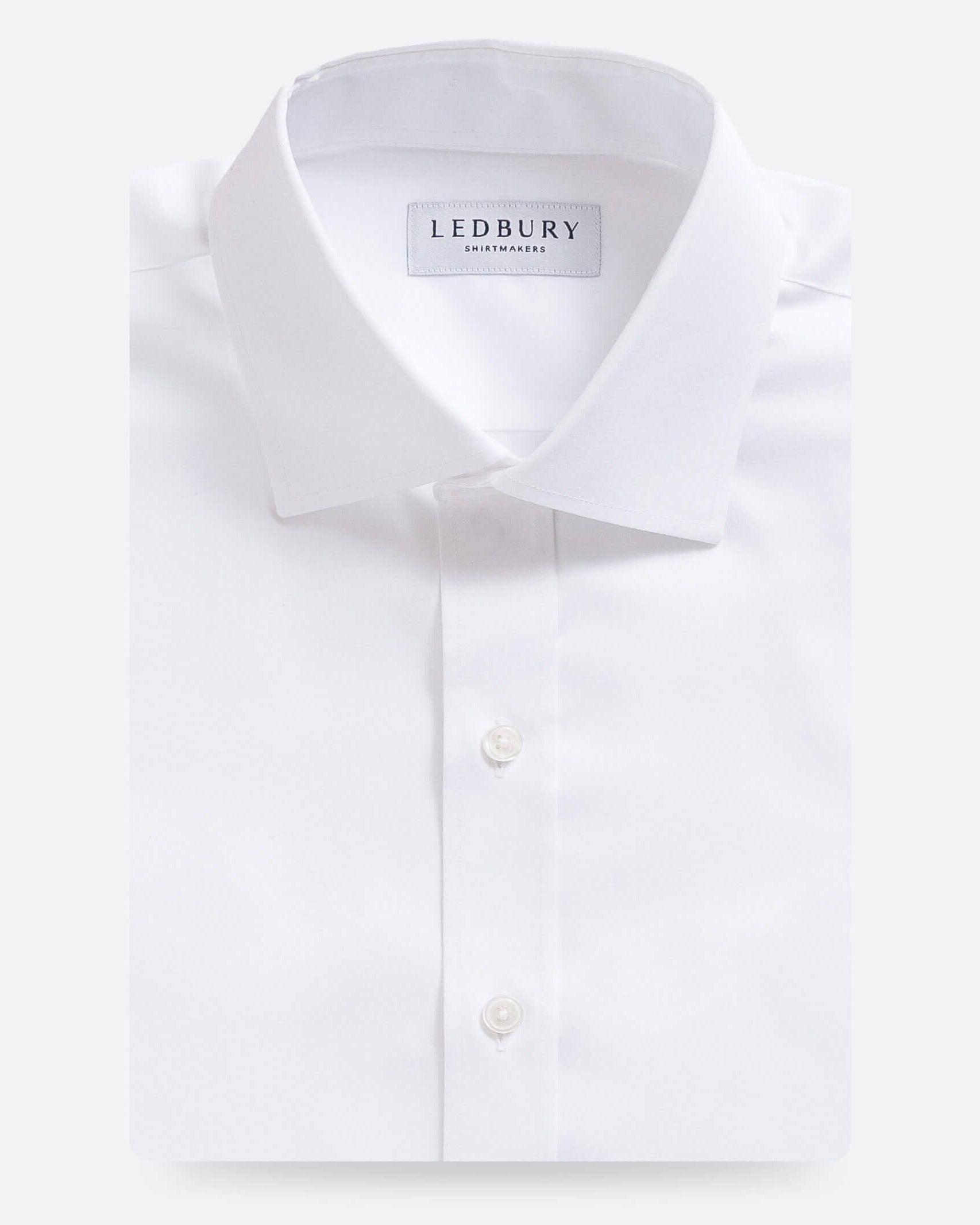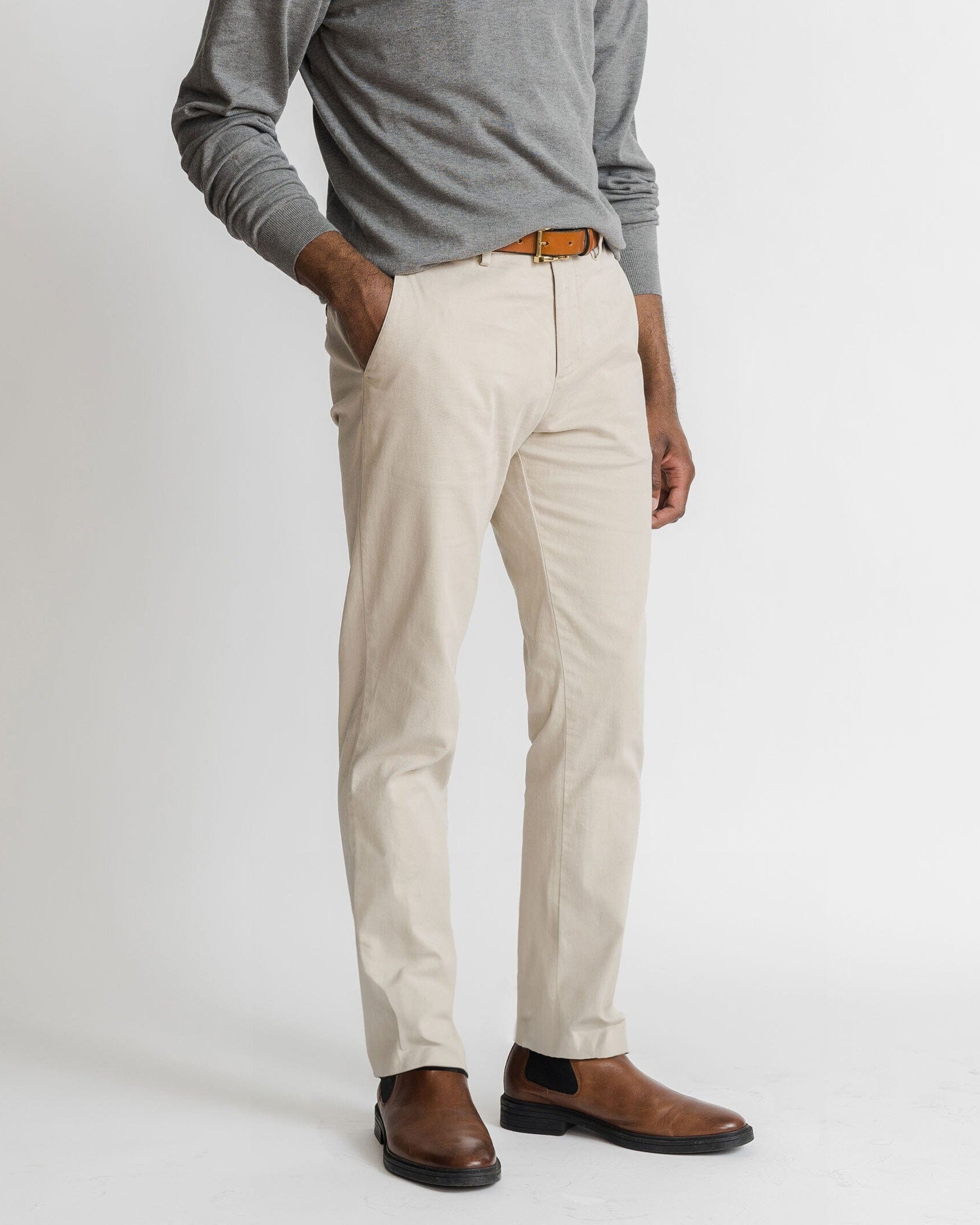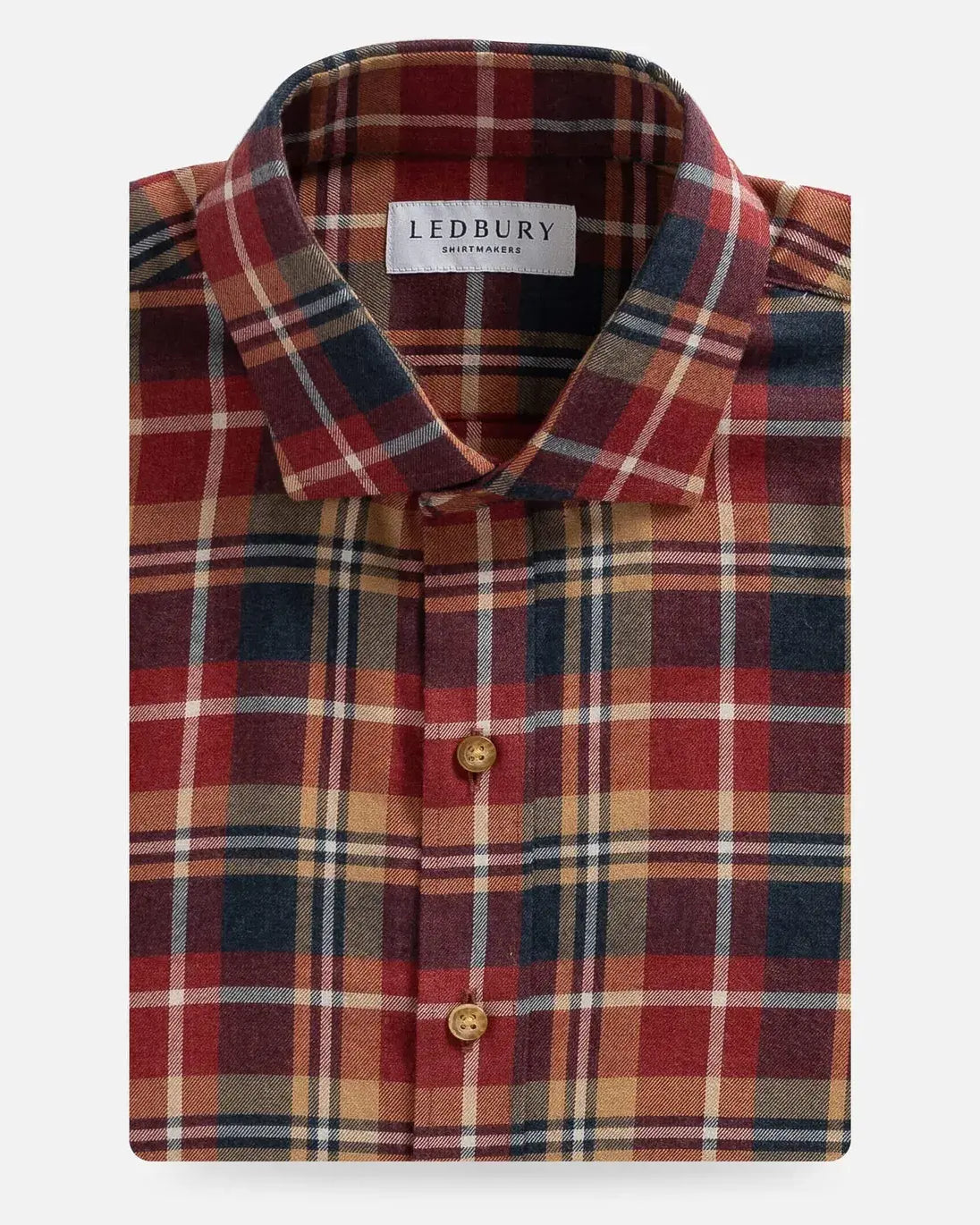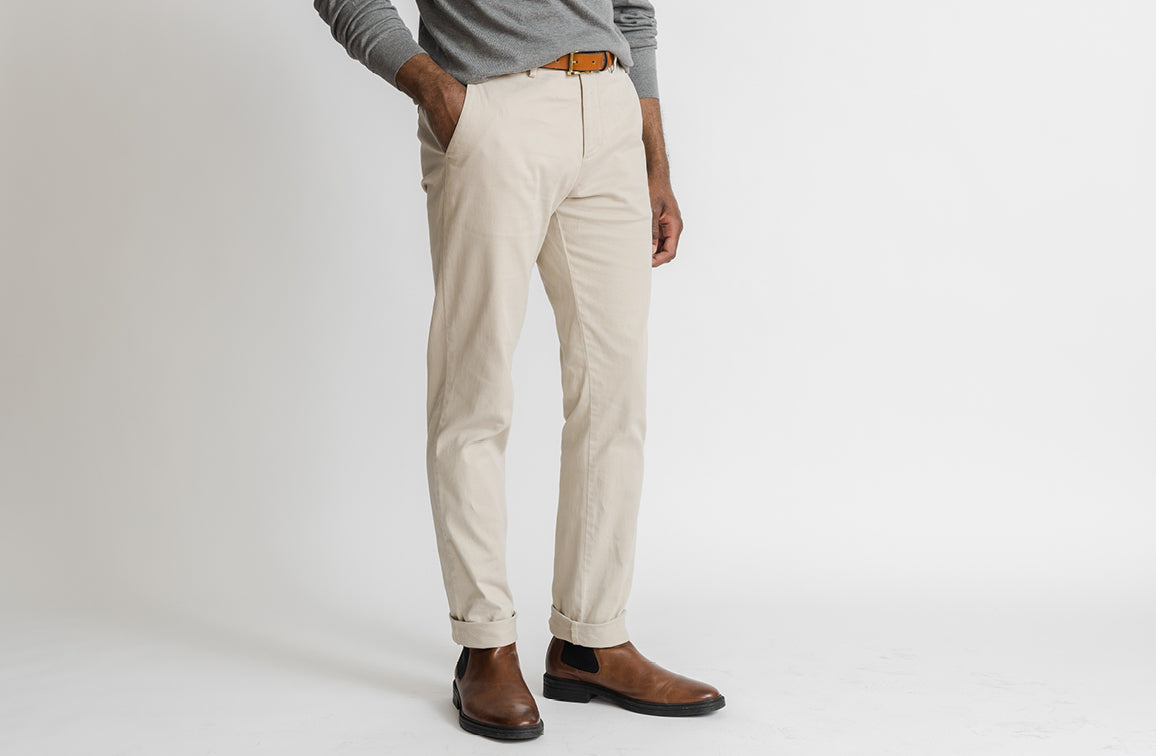One look at our Summer Collection and it’s obvious that we’re enthusiastic about this natural fiber. For sweltering summer months, nothing beats the breeziness and breathability of this loose weave - you will literally and figuratively always be cool in linen. Our love of the fabric led us to a natural curiosity about its origins and history, so we tapped the linen experts at Albini, one of the Italian mills where we source our fabric, and asked them about their knowledge of this fine fabric. If you have hesitance about wearing linen, or are not sure how to work it into your wardrobe you're in luck. We also consulted with our resident linen expert Derek Guy of Put This On to get his counsel on wearing linen with confidence and style. Read on for a deep dive into the harvest of flax and style tips to keep you cool through Labor Day.

Linen is woven from the fibers of the flax plant (Linum usitatissimum), a long and flexible herbaceous plant sprouting a single blue flower. The stalks contain the bundles of fibers that are later turned into fabric. Flax thrives in climates where the soil is relatively warm and moist, there's plenty of sunshine, and the nights are cool. Albini grows its flax harvest in Normandy, France, where its terroir and proximity to the ocean encourages the best crops. In the 17th Century, the early settlers at Jamestown were encouraged to produce flax in the hopes that it would turn into a viable source of profits for the settlement. Ultimately flax harvesting in Virginia was short-lived - the soil wasn't agreeable and tending to the crops proved to be too labor-intensive for the earliest Americans. The tobacco boon quickly eclipsed the dream of a booming American flax industry.

Harvesting and processing flax is incredibly labor-intensive and requires many skilled and unskilled workers to take it from the field to fabric. Flax needs a deep, rich soil and quickly depletes the nutrients of where its planted, requiring constant crop rotation. Albini has trusted its flax production and care to Terre de Lin, a flax growers association and cooperative that has passed down the practice and tradition of flax production for generations. It is said that these flax experts can judge the success of a harvest with just a quick glance at the flax in bloom. Terre de Lin is the largest linen cooperative in Europe, with over 600 farmers who cultivate close to 25,000 acres in Normandy.

The collective are also involved in constant research and innovation on the flax seed. Every year they begin a new process of natural selection where over 20,000 seed varieties are sown via genealogical selection to create new species, which takes nearly 10 years to develop. The harvest itself takes 100 days for the flax to reach maturation and is sown between March and April.


The next step towards becoming your favorite shirt, the flax goes through the process called "retting" where they essentially pull the flax stalk from the soil and leave it in the field for a period of time (from two weeks to sometimes up to three months) and let nature run its course. During this process, micro-organisms naturally found in the dirt (fungi and bacteria) work in tandem with the natural elements (rain, humidity, sun) to degrade the thick fibrous stems of the flax plant to prepare it for extraction. While rain is an integral part of the retting process, too much moisture can lead to mold and potentially destroy the crop.


Once retted, the plants are then baled like hay with linen twine to prevent cross-contamination. The bales are then transported to the turbines where the flax is "scutched" or processed through a machine that beats the woody parts of the stalk to separate it from the valuable fibers. After the scutching process, the longest fibers are then hand-selected from the turbine based on their general characteristics and natural coloring. The cultivation of linen, a process that Terre de Lin is so passionate about, is a niche culture and represents less than 1% of global production of natural fibers.

After the final refinement process and various steps of quality control, the transformation of the linen continues in Italy in the Bergamo province. The premiere linen manufacturer, Linificio e Canapificio Nazionale, transform the long fibers into yarn using the most cutting-edge spinning technology. The process includes four steps: combing, pressing, bleaching, and spinning the linen.

From the fields of Normandy to your back, the next time you don a free and easy linen shirt we hope you'll remember the painstaking and arduous process it took to become the fine fabric we love.
 Tips for wearing linen, from our unofficial linen guru, Derek Guy of Put This On:
Tips for wearing linen, from our unofficial linen guru, Derek Guy of Put This On:
Linen pants: yes or no?: Definitely yes.
Styling with linen: For shirts, you can wear anything from casual chinos to a more formal pair of tropical wool trousers. Really, anything will work so long as you don't pair a linen shirt with a business suit. The informality of the shirt will look odd against the formality of the suit. A casual suit in cotton, however, would be perfect.
Linen care: Regular laundering is fine. Just don't bleach linen, as harsh chemicals can be harder on linen than cotton.
Linen rules: As long as it's hot, and you're not going to a board meeting, linen both looks great and feels good.
The wrinkle factor: So many guys are looking for ways to take the formal edge off of tailored clothes nowadays-- from unbuckling their double monks to wearing whimsical socks to pairing sneakers with suits. If you want something that looks a bit more sober, nothing will beat the natural sprezzatura that comes with linen. It will look much more naturally carefree than anything else you can wear.
Shop our Collection of made to order and ready to wear linen shirts now.











